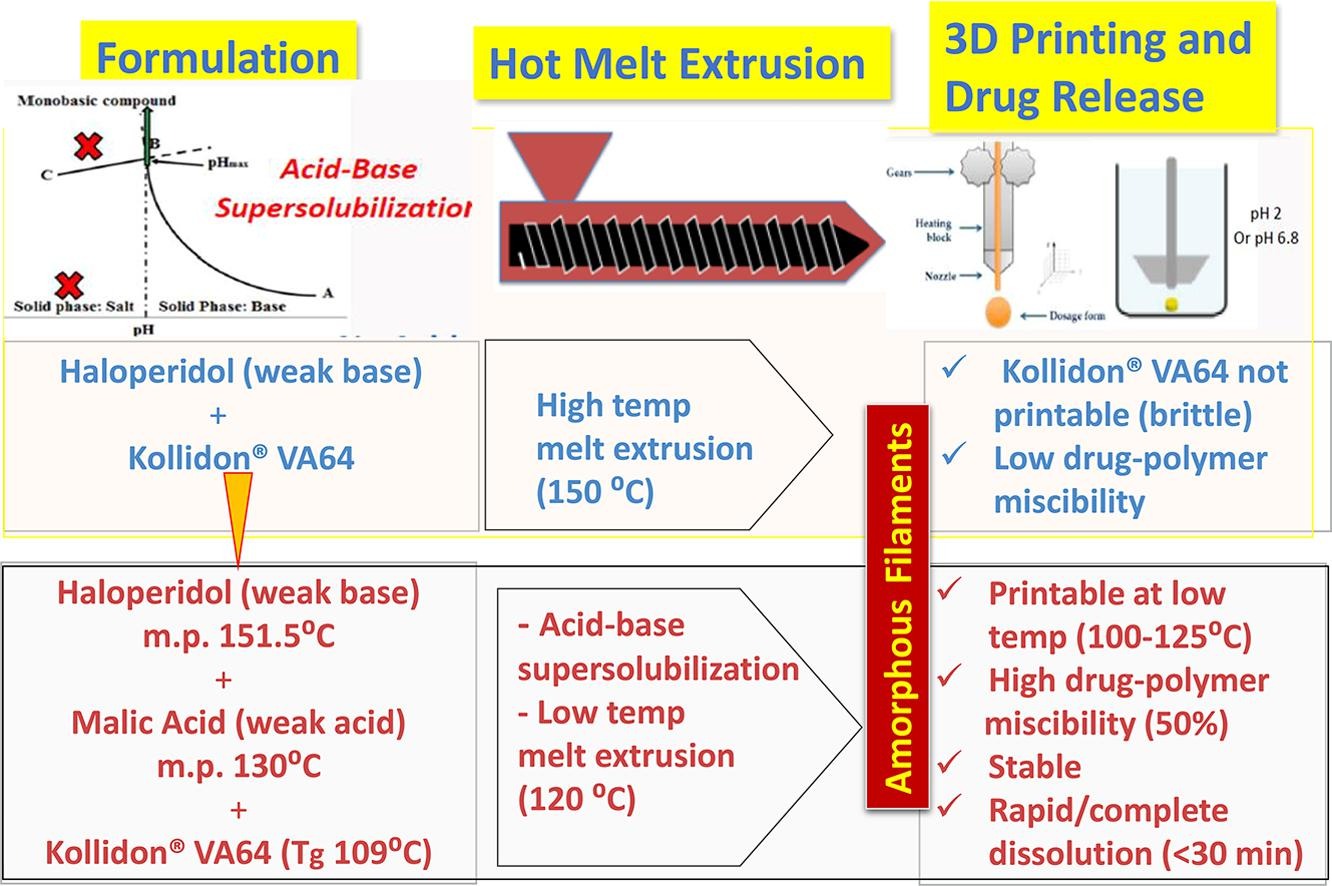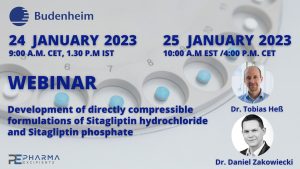Improving drug release rate, drug-polymer miscibility, printability and processability of FDM 3D-printed tablets by weak acid-base interaction

Slow drug release, low drug-polymer miscibility, poor printability of polymers used, and high processing temperature are major challenges in developing FDM 3D-printed tablets. These challenges were addressed in this investigation by having a model basic drug, haloperidol (mp: 151.5 °C), interact with a weak acid, malic acid (mp: 130 °C), during the melt extrusion of formulations into filaments used for 3D-printing. Malic acid was selected as it was previously reported that it did not form any crystalline salt with haloperidol but its addition to aqueous media could greatly increase the solubility of haloperidol from ∼ 1 µg/mL to > 1 g per mL of water by acid-base supersolubilization. Concentrated solutions of haloperidol-malic acid mixtures produced amorphous materials upon drying.
It has been observed in the present investigation that similar interaction between haloperidol and malic acid may also occur in the absence of water. Upon heating, haloperidol-malic acid mixtures at 1:1 and 1:2 molar ratios turned amorphous starting at ∼ 50 °C, which is much below the melting point of either component. When Kollidon® VA64, a brittle and non-printable polymer, was used as the polymeric carrier, the acid-base interaction greatly reduced the melt viscosity of haloperidol-malic acid-Kollidon® VA64 ternary mixtures. Consequently, melt extrusion of filaments and printing of tablets using such mixtures could be performed at much lower temperatures than those with haloperidol-Kollidon® VA64 binary mixtures.
The filaments containing 15 % and 30 % haloperidol along with malic acid and Kollidon® VA64 could be printed into tablets at relatively low temperatures of 125 and 100 °C, respectively, thus making Kollidon® VA64 not only printable but also doing so at low temperatures. Up to 50 % w/w drug load in filaments was achieved without any crystallization of haloperidol or malic acid. Drug release at pH 2 and 6.8 from printed tablets with 100 % infill was 80 % in < 30 min. Thus, the acid-base interaction can successfully resolve multiple development challenges encountered with FDM 3D-printed tablets.
Read more
Nirali G. Patel, Abu T.M. Serajuddin, Improving drug release rate, drug-polymer miscibility, printability and processability of FDM 3D-printed tablets by weak acid-base interaction, International Journal of Pharmaceutics, Volume 632, 2023, 122542, ISSN 0378-5173, https://doi.org/10.1016/j.ijpharm.2022.122542.
Our next webinar:
For free registration and more information click on the picture below or here:


